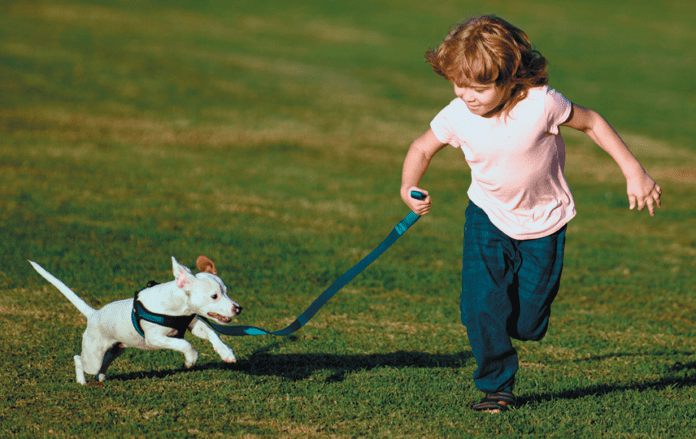Cats use their tails to help with balance. Think of the way you might hold out your arms to steady yourself as you make your way along a narrow ledge. Cats are frequently walking along narrow perches — bookshelves and so on — and their tails, which are long for their bodies, help them not to slip. Is it the same for dogs?
Not so much, say researchers who conducted a study with a title that begins “Tail wags the dog is unsupported.” Hailing from Germany, the U.S., Switzerland, and Australia, the researchers evaluated the biomechanics of 24 different dogs to better understand how they move. Noting that dogs have shorter tails for their body length than cats and a number of other species, they found that a dog’s tail movement has little impact on various complex maneuvers and contributes little to their biomechanics. They say this is true despite numerous “online platforms” claiming that dogs use their tails for such things as turning and jumping.
 So if not for movement, then what?
So if not for movement, then what?
This is not to say that tails don’t serve a purpose for dogs. But that purpose is communication rather than movement, as anyone who has some familiarity with dogs knows.
Wagging. As we explained last month, a wagging tail is a sign of emotional arousal; the faster the wagging, the higher the arousal level. A guard dog on alert may have a quick, twitch-like flicking of the tail, the American Kennel Club points out. A dog happy to see you because you’ve walked into the room might do a nice slow wag. Even the direction of the wag may signify something about mood. One study has suggested that a dog’s tail will wag more to the right when he feels positively about something, like being reunited with his person. Wagging to the left could be a sign of stress or concern. And when a dog’s tail wags in a circle like a fan blade, it’s pure happiness.
Held up high. A dog that holds his tail high like a flag, as the American Kennel Club puts it, is indicating confidence, assertiveness. (A tail held high also spreads a dog’s scent, as if to say in an olfactory fashion, “I’m here and strutting my stuff.”)
Pointing down. A tail pointing down — including a tail tucked between the legs — indicates stress, and often fear. (This tail position also hides a dog’s scent.)
Pointing horizontally. This often occurs when a dog is concentrating while exploring.
None of this means that a dog’s tail is never used to help with balance — just as the position of a cat’s tail isn’t only about balance but can also be an indication of mood.
And of course, a lot depends on the shape of the tail. A pug with a little squiggly tail is definitely not going to be able to use it for movement.
The better you know your dog, the better you’ll understand what he’s signaling with his tail — and whether he’s using it for any other purpose.
© everest community | Bigstock
A dog with his tail held high is feeling confident, secure.





